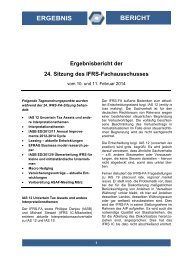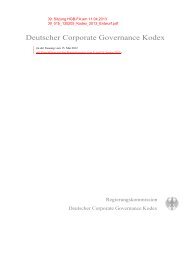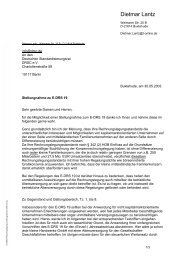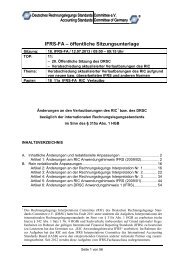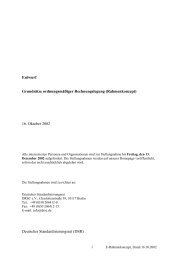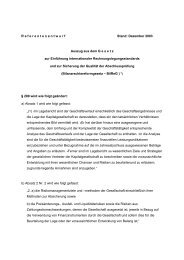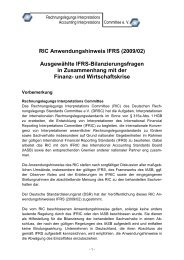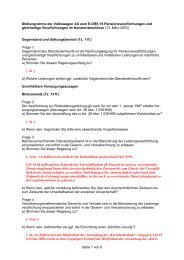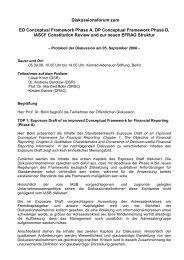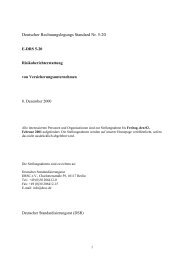Classification and Measurement: Limited Amendments to IFRS 9
Classification and Measurement: Limited Amendments to IFRS 9
Classification and Measurement: Limited Amendments to IFRS 9
You also want an ePaper? Increase the reach of your titles
YUMPU automatically turns print PDFs into web optimized ePapers that Google loves.
CLASSIFICATION AND MEASUREMENT: LIMITED AMENDMENTS TO <strong>IFRS</strong> 9 (PROPOSED AMENDMENTS TO <strong>IFRS</strong> 9 (2010))<br />
...continued<br />
Example Analysis<br />
However, the entity also moni<strong>to</strong>rs the<br />
fair value of the financial assets from<br />
a liquidity perspective <strong>to</strong> ensure that<br />
the cash amount that would be<br />
realised if the entity needed <strong>to</strong> sell<br />
the assets would be sufficient <strong>to</strong> meet<br />
the entity’s liquidity needs in a stress<br />
case scenario.<br />
Paragraphs B4.1.4A–B4.1.4B are added.<br />
In contrast, if an entity holds<br />
financial assets <strong>to</strong> meet its everyday<br />
liquidity needs <strong>and</strong> that involves<br />
recurring <strong>and</strong> significant sales<br />
activity, the objective of the entity’s<br />
business model is not <strong>to</strong> hold the<br />
financial assets <strong>to</strong> collect contractual<br />
cash flows.<br />
Similarly, if the entity is required by<br />
its regula<strong>to</strong>r <strong>to</strong> routinely sell<br />
significant volumes of financial assets<br />
<strong>to</strong> demonstrate that the assets are<br />
liquid, the entity’s business model is<br />
not <strong>to</strong> hold financial assets <strong>to</strong> collect<br />
contractual cash flows. The fact that<br />
the requirement <strong>to</strong> sell the financial<br />
assets is imposed by a third party<br />
rather than being at the discretion of<br />
the entity is not relevant <strong>to</strong> the<br />
analysis.<br />
B4.1.4A The entity’s business model for managing the financial assets may be <strong>to</strong> manage<br />
assets both <strong>to</strong> collect contractual cash flows <strong>and</strong> <strong>to</strong> sell. In other words, the<br />
entity’s key management personnel has made a decision that both collecting<br />
contractual cash flows <strong>and</strong> selling are fundamental <strong>to</strong> achieving the objective of<br />
the business model within which the financial assets are held. Compared <strong>to</strong> the<br />
business model whose objective is <strong>to</strong> hold financial assets <strong>to</strong> collect contractual<br />
cash flows, this business model will typically involve greater frequency <strong>and</strong><br />
volume of sales. This is because selling financial assets is integral <strong>to</strong> achieving<br />
the business model’s objective rather than only incidental <strong>to</strong> it.<br />
B4.1.4B The following are examples of when the entity’s business model may be <strong>to</strong><br />
manage assets both <strong>to</strong> collect contractual cash flows <strong>and</strong> <strong>to</strong> sell. This list of<br />
examples is not exhaustive. The examples are not intended <strong>to</strong> describe all<br />
fac<strong>to</strong>rs that may be relevant <strong>to</strong> the assessment of the entity’s business model nor<br />
specify the relative importance of the fac<strong>to</strong>rs.<br />
21<br />
� <strong>IFRS</strong> Foundation



